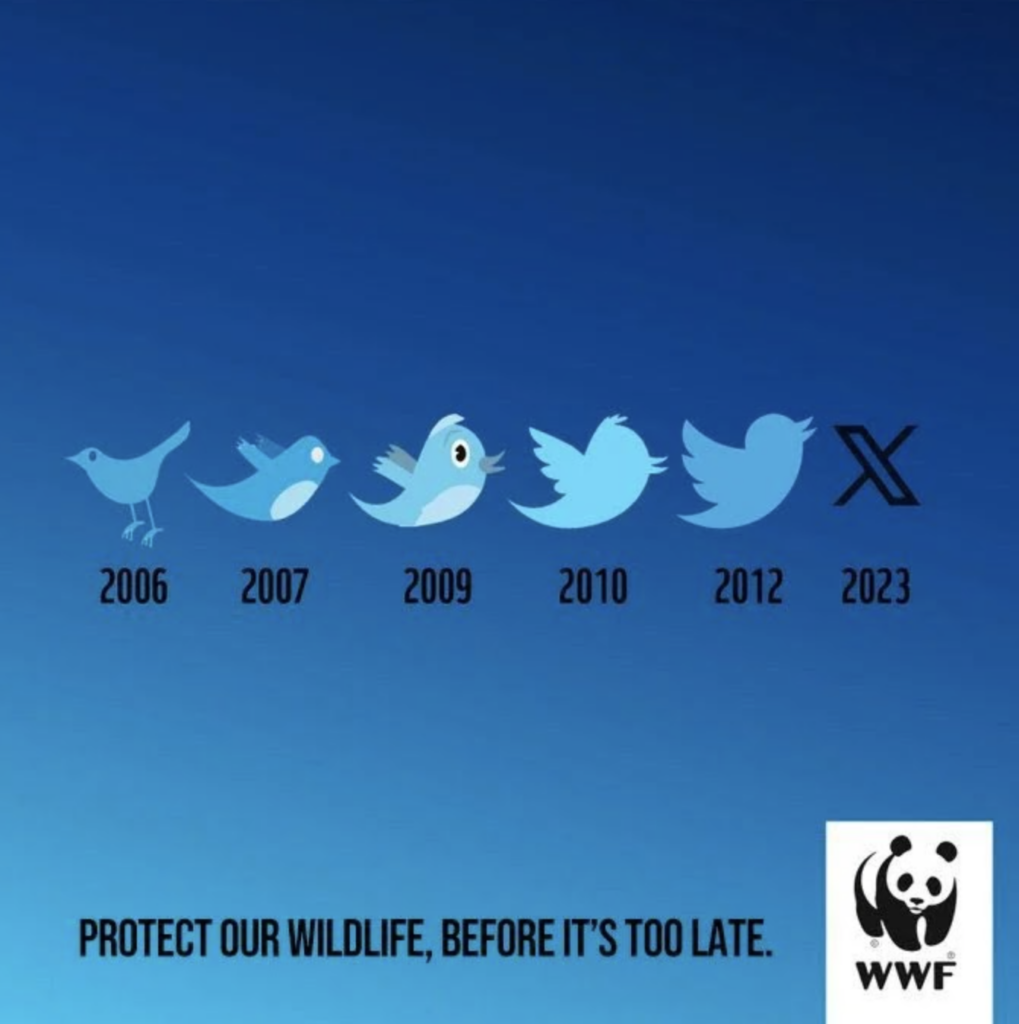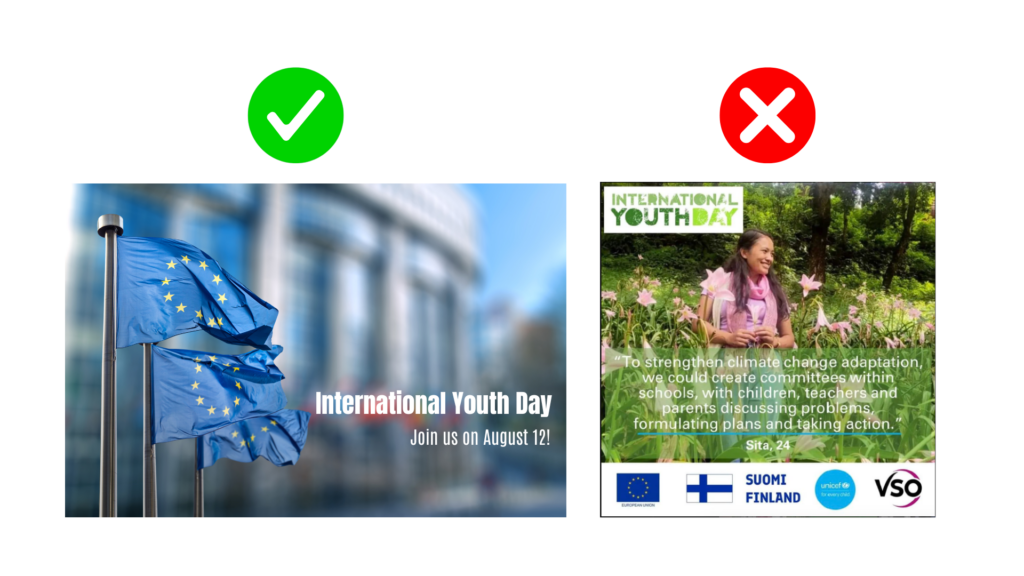Best practices for social media image use
Visuals are no longer optional on social media – they’re central. Without a strong photo or video, even the most important message can get lost. And the choice of the visuals will directly impact how your message is received. But what does “good” look like when it comes to social media images? And can formal institutions afford to be visually creative?
Can formal institutions be creative on social media?
The answer is – YES. And they should be! It is important to understand that creativity, especially on social media, doesn’t necessarily affect the formal image or the reputation of official institutions. On the contrary, they can help deliver important messages in a more efficient and engaging way. When institutions communicate with visual clarity and creativity, they build both trust and relatability.
One of the best examples comes from the World Wildlife Fund (WWF). They used Twitter’s rebranding to “X” to creatively reinforce their environmental message. The visual showed the evolution of Twitter’s logos over time, turning the iconic bird into “X,” implying the loss of species and biodiversity. It was timely, very much on point, and emotionally resonant – an excellent example of a response to a pop culture moment by still staying true to the mission and tone of voice of a formal institution!

Creative social media visuals from institutions can take many forms: strong photography, thoughtful use of color, original graphics, or even just clear and well-placed text. And balance is the key! Your creativity should support the specific message you want to deliver, it should be relatable to your audience, and fit the visual identity of your brand.
Why good visuals matter
Social media is a highly visual space nowadays. With quick scrolls, you have only a couple of seconds (or even milliseconds) to impress your viewers, make them “consume” the whole content, and get your message. As the first impression mostly falls on the visual, a poorly chosen image or a video can overturn a powerful or urgent message. Good visuals, on the contrary, can not only catch the attention but also show professionalism and shape a strong image for an institution or a brand.
It is such a misperception to think that good visuals are an unnecessary luxury for non-profit institutions. Whether it is a Facebook post or a news article on the webpage, the visual is an integral part of the message. An image that’s clear, appropriately lit, well-framed, and emotionally aligned with the topic adds credibility to your post. And this is what you should target!
What to consider when choosing social media images
There is no single formula or template that can be a universal solution for you. Every situation and message is different and requires a unique approach. Always remember that any image you post tells a story, whether you intend it to or not.
So how do you choose visuals that work? Here are key elements to consider before hitting “post”!
1. Image quality
Avoid: Blurry, pixelated, or low-resolution images.
Use: Crisp, high-resolution images with good lighting and focus.

2. Colour use
Avoid: Oversaturated filters or unnatural colour tones.
Use: Natural, well-balanced colours that reflect the tone of your message.

3. Dimensions and cropping
Avoid: Distorted images, cropping, or unnecessary frames.
Use: Properly sized visuals that fit platform specifications and keep the subject clear and centered.

4. Mood and emotion
Avoid: Images with contradictory emotions (e.g., sad expressions in a post about positive change).
Use: Visuals that match the intended emotion of your message – joy, urgency, hope, solidarity, etc.

5. Composition
Avoid: Overcrowded scenes with no clear focal point.
Use: Clean, focused compositions with a clear visual hierarchy.

6. Text over images
Avoid: Busy backgrounds that make text unreadable, too many fonts, or clashing colors.
Use: Text placed over plain areas, consistent font styles, or graphic overlays that maintain readability.

7. Graphic design solutions
Avoid: Overly decorative or unrelated visuals.
Use: Graphics aligned with your institution’s visual identity – simple, purposeful, and brand-consistent.

Conclusion
Good visuals are a fundamental part of effective communication on social media. Whether it’s the emotion in a photo, the right text placement, or the composition itself, every visual choice matters. Stratcom PRO offers support to institutions looking to improve how they communicate through visuals ensuring that every image strengthens the message and reflects their identity.
If you want your visuals to work harder for your message, we’re here to help you do it right!
This article is written by digital communications expert Arpine Hakhinyan. Arpine has extensive experience in digital communication strategies and has worked closely with EU Delegations, helping them improve their social media presence and experiment with engaging formats while maintaining institutional standards.